A few years back, a local reporter and columnist attended a content strategy conference at which I was a presenter.
I had the impression he got sent there for his own professional development reasons. But he might have attended out of genuine curiosity, or for the purposes of the write-up he eventually published in a local monthly. Regardless, the gist of his sentiment, as I remember it — please don’t look for the article, I’m not trying to give that nonsense more exposure — was: “Content?! What even is content?! What happened to writing? What about the art, man?”
He further ‘supported’ this sentiment with a variety of non-sequiturs that seemed to focus on the fact that people at the conference were … enjoying themselves? Rather than also going into a tizzy about the vocabulary he found so confusing and/or offensive, I suppose.
Unfortunately, this was not an isolated incident. I encounter Salty Newspaper Men (SNM’s), as I now think of them, every few months or so. As a content strategist, I talk and write a great deal about ideas from my professional world, like content design, content management systems, content auditing, content ecosystem mapping, information architecture, service design, and so forth. Inevitably, my own content (there’s that word again!) — the things I write and share and record and produce about content — finds its way to an SNM-in-waiting, triggering another rant about the professional vocabulary of my field, most often focused on our job titles, but also on terms of art for our tools and methods (e.g. ‘content auditing’).
It’s often hard to tell exactly what the SNMs are arguing for as they’re mostly penning reactions against. But broadly, the opinions I hear most often are these:
- The jargon of UX content makes our work opaque or confusing to outsiders and newcomers, so therefore we shouldn’t use it, even amongst ourselves.
- UX content terminology, especially job titles, is confusing and talking about it is exhausting. Since there’s no alignment to be found on any of the terms, our job titles and concepts are actually useless and should be abandoned in favor of concepts with an earlier provenance. (Oh, and they just so happen to prefer that the vocabulary clock would roll back to whenever their own particular professional identity was more lauded, be it copywriter or technical writer or webmaster or what-have-you.)
- The word content, itself, causes those involved to lose sight of what the content actually is — an article, a story, a film, etc., which has to have some sort of negative impact on the quality of that content, doesn’t it? (Or they’ll argue that this is just morally/professionally offensive, because they are some sort of self-appointed defender of the Purity of Writing or whatever.)
To which I respond: 🙄🙄🙄
Once my eyes find their center again, if I’m trying to be helpful, I might also respond with some version of the following rebuttals:
1) Any content strategist worth their salt (ha!) is professionally aware of the risks and dangers of jargon, and how to employ it appropriately.
Jargon helps professionals who already understand said jargon communicate with each other more specifically and efficiently. One doesn’t have to go far at all to find articles and guidance from content strategists about using the words that work for a given audience, and the importance of aligning on vocabulary with the team you’re working with so that everyone understands what we’re talking about — glossaries are a key part of most projects I work on. I have the impression that the SNM’s have not read these articles, nor perhaps any of the many excellent books on content strategy that tell you the same.
2) There isn’t a ‘debate’ about UX content terms.
Not a substantive one, anyway. When I am in a room of my peers, be it on Slack or at a content design or content strategy conference, there is broad alignment on what it means to be a content strategist versus a content designer, on what information architecture is, on what a content model is and how that differs from a content design system, and so on. There has been for years.
That’s not to say that it’s easy to learn these distinctions, and that there aren’t opportunities to simplify onboarding into the broader UX content world and make it more welcoming and inclusive. But there’s not that much of a debate, not really, not amongst people who know what they’re talking about, which is thousands on thousands of UX content practitioners of all stripes and backgrounds.
Furthermore, new terminology and new job titles are a good thing, even if they’re temporarily confusing or seem to muddy the water, because these new terms and identities help even more people find their way into our practice and highlight how their unique background, experience, or focus is relevant to what we do. Like in any field, the good new stuff tends to evolve a bit and then stick around, and the less-good new stuff tends to fade away with time.
3) If you have a better collective noun term of art for ‘content’, I’m happy to entertain it.
But so far I haven’t found a word that works better to describe, for instance, the stuff that the content management system manages, or the stuff that the content design system helps us design with consistency. In digital strategy contexts, it’s important to help teams understand that their website is not made of pages, it’s not made of words, it’s not made of articles: it’s made of content, a material that has to be planned for and managed in a very intentional way. Content is a thing we have to understand together as a digital strategy team, and align on a useful internal definition of for our work. To actual UX content professionals, content is not synonymous with writing, nor with words.
Content is the stuff that has to be managed like content, which is different than the stuff that has to be managed like code, or like design, or like analytics, or like customer data. As for the purity of writing and reverence for the art form, most UX content professionals I know have deep reverence for words and writing. Many of them write poetry, publish novels, make zines, and create art. In fact, many of them do a great deal more of that than the ad-land copywriters and other SNMs ranting on about our vocabulary and job titles. (Are headlines about mayonnaise and local car dealership jingles a form of art, by the way?)
I suppose at this point I am just being a Salty Content Strategy Man, who should probably leave well enough alone, but can you blame me for wanting to fight back? The content strategists I know care deeply about words and writing, and about making digital experiences more useful and usable. They put in tremendous amounts of volunteer work to grow this field, create resources, popularize useful concepts, and share what they know. It’s an incredibly generous, giving, and welcoming field. We’re far from perfect, and sometimes our jargon does leak into the wrong places, and make people feel unwelcome or confused. But I think that’s true of nearly every field, and is not a reason to abandon the very important concepts and distinctions that that jargon can represent.
I still care about content. I care about the field of content strategy, and the tools and concepts we’ve developed together. And I look forward to what’s next. I look forward to always having new things to learn, and to discovering (or even inventing) new terminology that will help me understand old concepts in new ways.
I don’t know if I’ll always be a ‘content strategist’ in title, but I’ll always care about good content, whatever we call it. And I’ll always care about the people doing that work. Here’s to what’s next!
An earlier version of this piece was originally published to LinkedIn on August 7, 2022.

